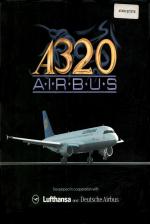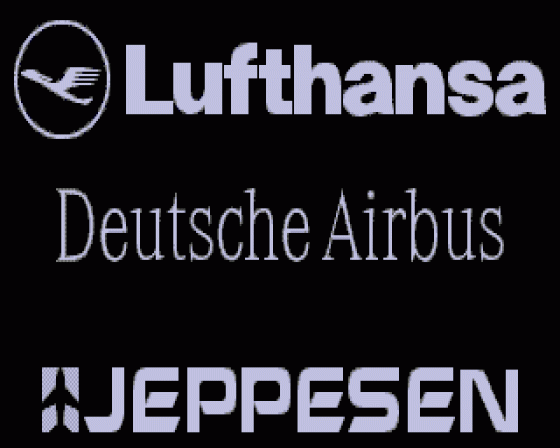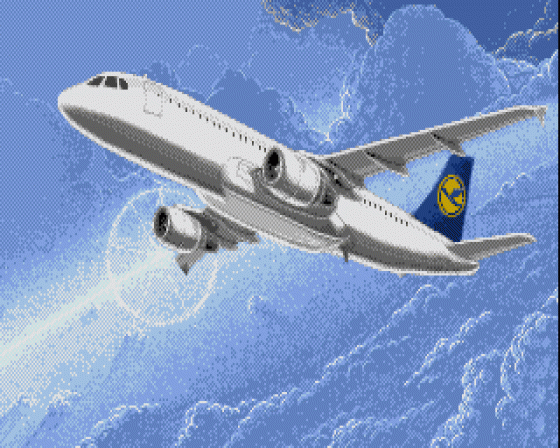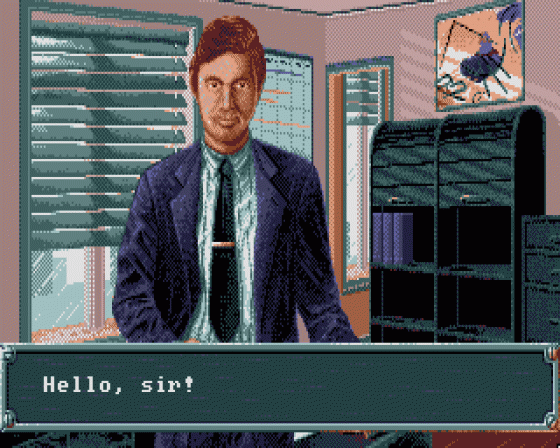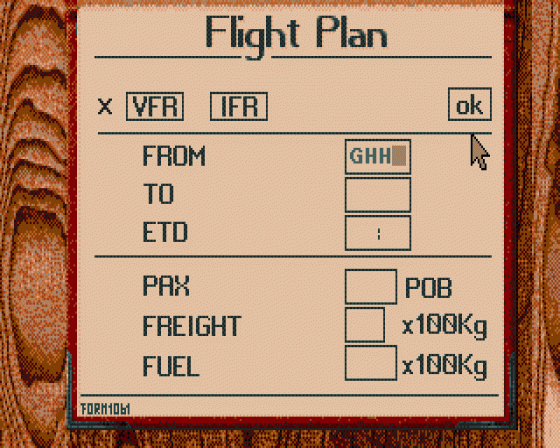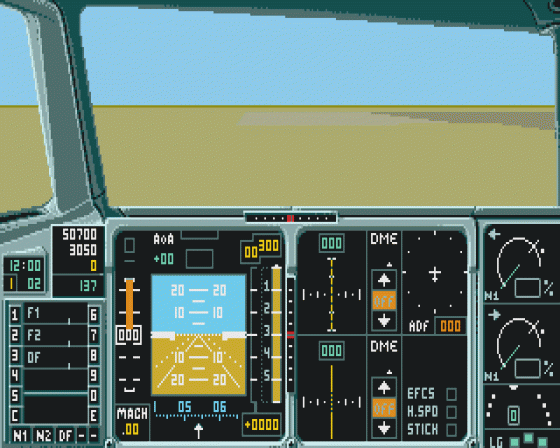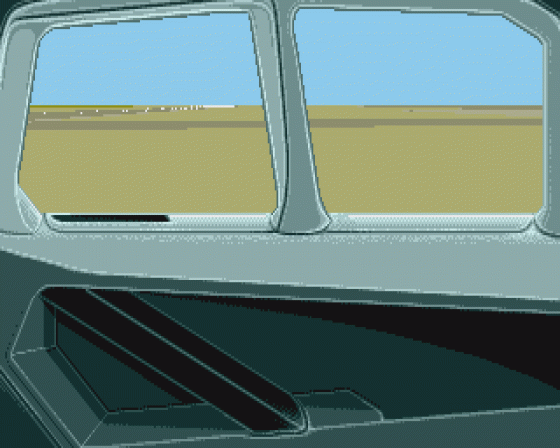
ST Format
 1st August 1992
1st August 1992
Categories: Review: Software
Author: Richard Bradshaw
Publisher: Thalion
Machine: Atari ST
Published in ST Format #36
A320 Airbus
Disaster beckons. On your way back from Ibiza your airliner's entire flight crew has gone down with food poisoning. A stewardess asks if there is a passenger on board with flying experience who can safely land the plane and who didn't eat the salmon mousse. Alas, nobody comes forward - is the aircraft doomed? Hold on a minute, can't you do something? After all the hours spent bombing bridges in F-19 Stealth Fighter you must have some idea about how to control a plane! After several arguments and a scuffle, you are shown the vacant cockpit of the A320 Airbus - it's all up to you now.
Fortunately, this has nothing to do with the scenario for this excellent flight sim from Thalion Software. Rather than being thrown in at the deep end, you're encouraged to train as much as possible before carrying out "real" flights. Along with the software, you are given heaps of navigational charts and a fairly comprehensive manual. This teaches you everything from the basics of flying to modern navigational methods. To start off with, you can choose Training or Duty flights. Obviously training is a must to start with. The Duty option means you have to set up your own log book - all your flying experience is recorded to disk. To begin your training, follow the Flying Lesson chapter to give yuo the chance to take part in a take-off and landing demonstration. This helps even the hardened flight-sim expert find his way around the cockpit. You need to get used to the aircraft controls, functions and capabilities - as well as find the coffee machine.
Most useful for beginners is the availability of an automatic landing facility which goes to prove what an easy job being an airline pilot really is! From here you progress to navigational training using the simulator's instruments. Contrary to popular belief, the auto-pilot is not an inflatable man for use in emergencies, but an important computer tool for the pilot. The capabilities of this computer are demonstrated well in this simulation and you must be able to use it before you proceed to duty flights. The system - as in real life - is based on a series of navigational beacons and air corridors which you have to navigate correvtly using your auto-pilot. Of course, as you become more proficient, your use of this particular piece of electronic gizmo is limited as its facilities are taken away bit by bit.
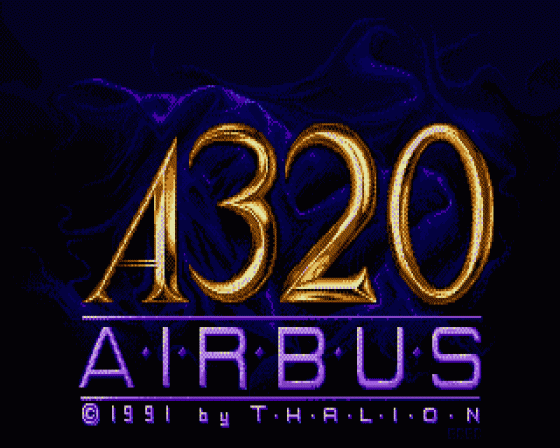
Once you're confident that you won't get hopelessly lost flying between Heathrow and Gatwick, you're ready for the next big step of risking other people's lives as well as your own. Duty flights enable you to start your flying career in earnest (an airport in Belgium). You must first draw up your flight pan including your destination, the number of passengers, and your departure time. You must also calculate your fuel requirements accurately.
After each flight you are given a percentage rating on your performance. If you land with too much juice, you're penalised, and if you don't land with enough, well...! When you have completed the appropriate number of duty flights you can choose to advance a rank by taking a Qualification Flight. You also have a regular Standardisation Check to ensure that you still fulfil the requirements of your current rank. Visually, A320 Airbus appears very similar to other flight-sims. The vector graphics are rather ordinary and not particularly fast. Disappointingly, though, there are no outside views. The cockpit display is clear and well presented. As you would expect, the cockpit window is smaller than you find in combat flight-sims because clear instrumentation is more important than good views of the cloud formations. The sound effects make the aircraft sound more like a lawnmower than an advanced jet: you just have to turn the volume down when it drives you ga-ga. The controls are well thought out and easy to use. Main control is via joystick or the mouse, but use of the keyboard is vital for many important functions, including the auto-pilot.
Verdict
A320 is disappointing in one or two areas. Bearing in mind that this is not a combat flight-sim, it would be good to see more exciting graphics. The airports are deserted and the topography is about as interesting as eating your own nasal hair. When the game really scores is its accuracy and detail.
It creates realistic conditions for you to develop and practise your flying skills. This realism provides a challenge that gives you a sense of achievement when you have succeeded. If you're into flying, or even a pilot yourself, A320 is likely to keep you up way past your bedtime - just don't leave the landing light on.
In Brief
- A serious flight-sim. A very different beast to Knights Of The Sky.
- More detailed and accurate than most combat flight-sims.
- Not as fast as Mig-29 SuperFulcrum.

